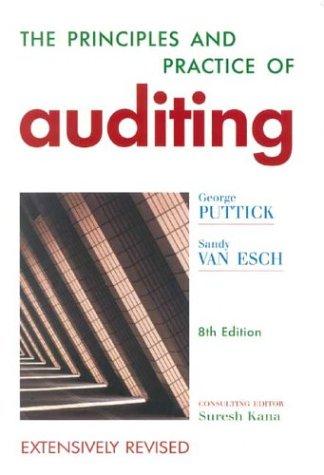Gibson Company engaged in the following transactions for the year 2016. The beginning cash balance was $27,700 and the ending cash balance was $68,507 1. Sales on account were $282,000. The beginning receivables balance was $93,400 and the ending balance was $77,900 2. Salaries expense for the period was $50,590. The beginning salaries payable balance was $3,500 and the ending balance was $2,000 3. Other operating expenses for the period were $121,550. The beginning other operating expenses payable balance was $4,670 and the ending balance was $8,822 4. Recorded $19,160 of depreciation expense. The beginning and ending balances in the Accumulated Depreciation account were $14,450 and $33,610, respectively 5. The Equipment account had beginning and ending balances of $206,170 and $240,370, respectively. There were no sales of equipment during the period. 6. The beginning and ending balances in the Notes Payable account were $46,400 and $146,900, respectively. There were no payoffs of notes during the period 7. There was $5,596 of interest expense reported on the income statement. The beginning and ending balances in the Interest Payable account were $1,527 and $1,018, respectively 8. The beginning and ending Merchandise Inventory account balances were $94,180 and $113,016, respectively. The company sold merchandise with a cost of $153,962 (cost of goods sold for the period was $153,962). The beginning and ending balances in the Accounts Payable account were $9,400 and $11,374, respectively 9. The beginning and ending balances in the Notes Receivable were $5,200 and $10,100, respectively. Notes receivable result from long-term loans made to employees. There were no collections from employees during the period. o. The beginning and ending balances in the Common Stock account were $100,000 and $123,000, respectively. The increase was caused by the issue of common stock for cash. 11. Land had beginning and ending balances of $48,700 and $35,971, respectively. Land that cost $12,729 was sold for $9.390, resulting in a loss of $3,339. 2. The tax expense for the period was $7,900. The Taxes Payable account had a $830 beginning balance and an $764 ending balance. 3. The Investments account had beginning and ending balances of $22,300 and $25,900, respectively. The company purchased investments for $18,100 cash during the period, and investments that cost $14,500 were sold for $22,000, resulting in a $7,500 gain. Required a. Determine the amount of cash flow for each item and indicate whether the item should appear in the operating, investing, or financing activities section of a statement of cash flows. Assume Gibson Company uses the direct method for showing net cash flow from operating activities. b. Prepare a statement of cash flows using the direct method. Complete this question by entering your answers in the tabs below. Prepare a statement of cash flows using the direct method. (Amounts to by a minus sign.) be deducted and cash outflows should be indicated GIBSON COMPANY Statement of Cash Flows For the Year Ended December 31, 2016 Cash Flows From Operating Activities: Cash Receipts from: Sales Total cash inflows Cash Payments for Other operating expenses Inventory purchased 0 et cash outflow from operating activities Cash Flows from Investing Activities Disbursed for notes receivable Proceeds from sale of investments Proceeds from sale of land Cash Flows from Financing Activities: Proceeds from loan Proceeds from stock issue Ending cash balance










